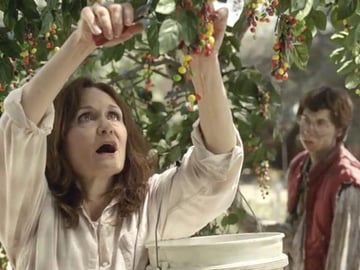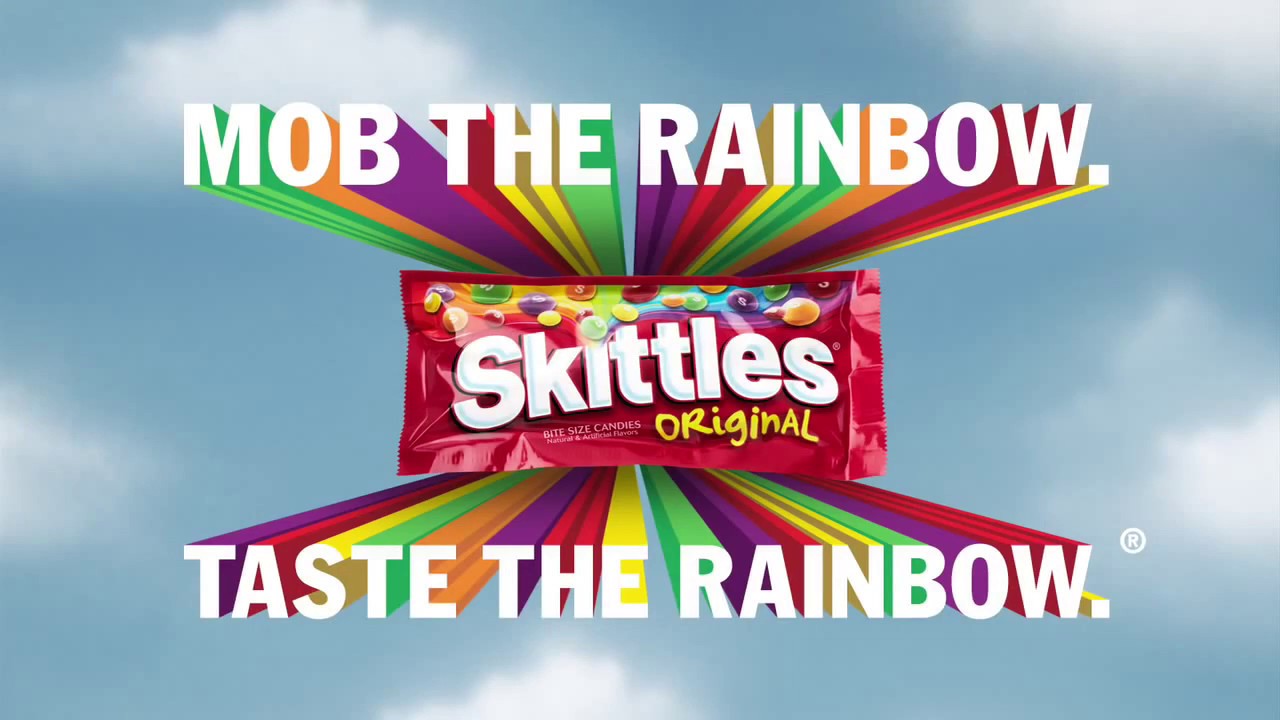There are some slogans that are so iconic, it would be a marketing crime ever to touch them. Classics like Nike's "Just Do It" or "Easy, Breezy, Beautiful: Covergirl" come to mind as a few that have long endured. However, sometimes, overhauling a well-known slogan or tagline can have a huge impact on a brand or product. Since 1994, the multi-colored candy Skittles was synonymous with its slogan "Taste the Rainbow," but around the early 2000s, that slogan started to see some interesting changes in a marketing sense. Since then, 40+ different TV ads have aired that play with the phrase, and we're willing to bet you remember several of them. In this marketing campaign review, we'll discuss how Skittles uses its slogan "Taste the Rainbow" in unexpected ways to create insanely memorable advertisements that promote brand recognition.
Marketing Strategies Used in Skittles' Taste the Rainbow Campaign
- Striking imagery and ideas: What makes the Taste the Rainbow campaign so successful is, in large part, the absurd and sometimes even off-putting nature of the content in the ads. Most of Skittles' commercials function by putting the candy into unlikely situations, like alien abductions, or pairing Skittles with strange characters, like a half-man, half-sheep hybrid. However, this humor and absurdity isn't just random or gratuitous. The reason why these ads are so memorable and recognizable is that they're so odd, you can't help but remember them. They become topics of discussions, or sear such strange imagery into our heads that we can't help think of them from time to time and, hopefully for the brand, stir up cravings for Skittles.
- A catchy slogan: I've already mentioned the slogan several times, but here's what the long-running "Taste the Rainbow" campaign has done with it. While Taste the Rainbow was already well-known by the early 2000s, when a new series of ads started airing, the team working on the Skittles ads started making slight changes to the slogan in order to fit their ad concepts. For example, in an ad where a Skittles tree is growing out of a boy's stomach, the tagline is amended to say, "Harvest the Rainbow, Taste the Rainbow." Making that change helps the slogan relate more closely to the outrageous subject matter of the ad. At the same time, by implying that it's possible to also "harvest" the rainbow, the ad promotes the candy as something to be experienced, not just eaten. There are plenty of other examples of ads that bend the slogan in memorable ways, like "Believe the Rainbow" and "Transplant the Rainbow," just to name a few.
 Ad distribution: The Taste the Rainbow campaign ads have been airing on television for decades now, mainly on networks that appeal to children and teens, like Nickelodeon or MTV. These offbeat ads are strategically placed on networks that are most likely to be watched by the target audiences for Skittles -- the same audiences that would likely be most receptive to the absurd nature of the ad concepts. However, in my time, I've also seen the themes and slogans of this campaign translated to magazine ads, billboards, banner ads online, and more. Because this campaign has become so ubiquitous in our culture, it's possible for Skittles to extend the concept to other types of media that can only allude to the absurd Skittles situations but with a similar effectiveness to the actual TV ads.
Ad distribution: The Taste the Rainbow campaign ads have been airing on television for decades now, mainly on networks that appeal to children and teens, like Nickelodeon or MTV. These offbeat ads are strategically placed on networks that are most likely to be watched by the target audiences for Skittles -- the same audiences that would likely be most receptive to the absurd nature of the ad concepts. However, in my time, I've also seen the themes and slogans of this campaign translated to magazine ads, billboards, banner ads online, and more. Because this campaign has become so ubiquitous in our culture, it's possible for Skittles to extend the concept to other types of media that can only allude to the absurd Skittles situations but with a similar effectiveness to the actual TV ads.
Pushing a Product to its Limits
The Taste the Rainbow campaign from Skittles has run for nearly two decades now, but we have to wonder what the conversations were like among the marketers who spearheaded the initial ads. At the time, it must have looked like a risk to portray their product, a delicious candy, in such strange and sometimes even disgusting situations. By associating the candy with the weird concepts in the TV ads, the brand may have potentially driven customers away if the idea hadn't landed as well as it did.

However, the success and longevity of the Taste the Rainbow campaign says something about the impact of shock value. Sometimes, going with an idea that's a little more "out there" and makes unexpected implications about the product or brand can be just as effective, or more so, than a straightforward approach. It may be worthwhile to push your product a little further when it comes to grabbing the audience's attention with your next ad.


